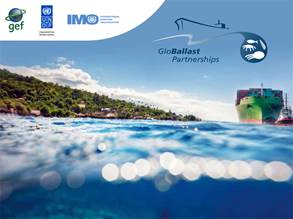During the 20th century, tiny organisms carried in the ballast water of ships began to be recognized as alien invasive species. These aquatic species were hitching a ride across the oceans and some were embedding themselves in new areas, multiplying and becoming harmful invasive aquatic species. The impacts on native species, local ecosystems and sea-based economies have, in some cases, been devastating. The story of how global partnerships, governments, industry, academia and other stakeholders came together to tackle this problem is told in a new publication, The GloBallast Story, launched (6 June) during a side event at the UN Ocean Conference in New York.
 The publication outlines the key achievements of the GloBallast Partnerships Programme, executed by IMO in collaboration with the Global Environment Facility (GEF) and the United Nations Development Programme (UNDP). The project was launched in 2007 after an initial 4-year phase and has been assisting developing countries to reduce the transfer of harmful aquatic organisms and pathogens in ships’ ballast water and implement the IMO Ballast Water Management (BWM) Convention.
The publication outlines the key achievements of the GloBallast Partnerships Programme, executed by IMO in collaboration with the Global Environment Facility (GEF) and the United Nations Development Programme (UNDP). The project was launched in 2007 after an initial 4-year phase and has been assisting developing countries to reduce the transfer of harmful aquatic organisms and pathogens in ships’ ballast water and implement the IMO Ballast Water Management (BWM) Convention.
The 10 most invasive species that can be transferred through ships’ ballast water are profiled in the publication, which also provides infographics, diagrams and detailed case histories.
The book was launched by Chris Severin from the GEF, Andrew Hudson from UNDP and Stefan Micallef from IMO, in the presence of Rear Admiral Brady from the Maritime Authority of Jamaica.
